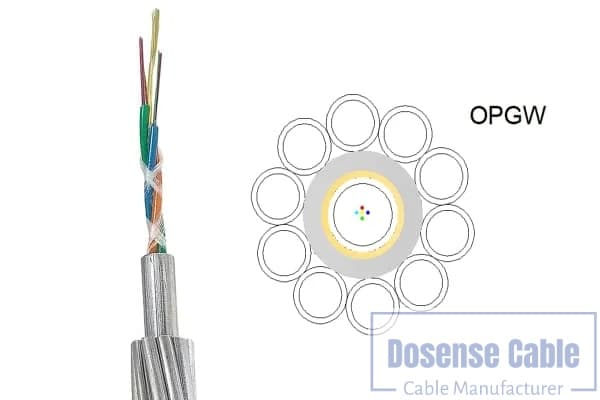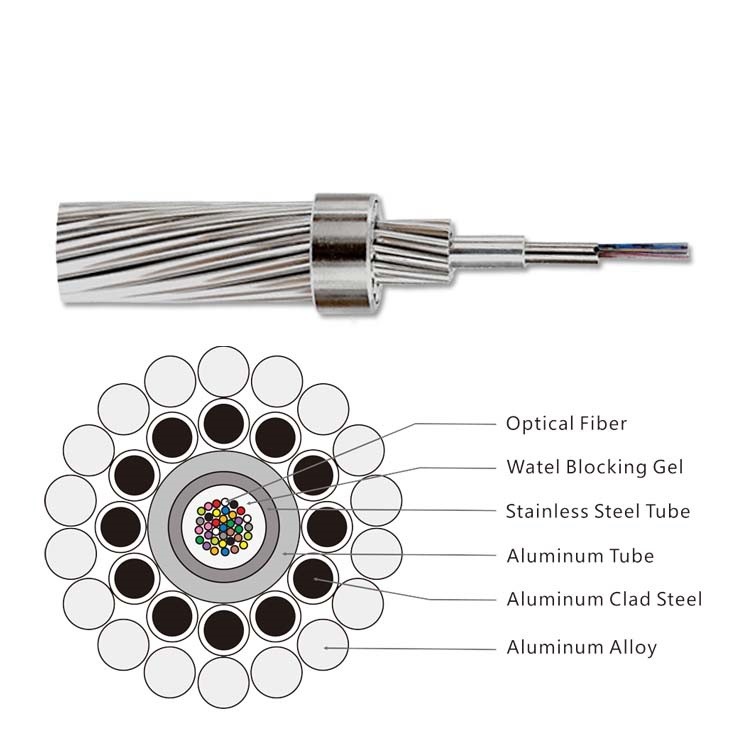
In the realm of modern power transmission systems, the integration of advanced technologies is pivotal for ensuring efficiency, reliability, and safety. One such technology that has significantly transformed transmission lines is Optical Ground Wire (OPGW). This article delves into the intricacies of OPGW cable, its functionality, applications, and the benefits it offers to the power utility sector.
Understanding OPGW Fiber
What is OPGW Cable? OPGW, short for Optical Ground Wire, is a specialized type of cable that combines optical fibers for telecommunications with the traditional functions of a grounding wire in overhead power transmission lines. This innovative design allows power utilities to simultaneously transmit high-voltage electricity and high-speed data signals over the same line.
OPGW Cable Structure and Composition Typically, an OPGW cable consists of:
- Central Strength Member: Provides structural integrity and supports the cable during installation and operation.
- Optical Fibers: These fibers are housed within the cable and serve as the medium for transmitting data signals.
- Aluminum Tubes: Surround the optical fibers, protecting them from environmental factors such as moisture and mechanical stresses.
- Outer Aluminum Wires: Serve as the primary conductors for transmitting electricity and provide the necessary grounding function.
Applications of OPGW Cable in Transmission Lines
Enhanced Communication Capabilities One of the primary advantages of OPGW is its ability to facilitate reliable communication alongside power transmission. The embedded optical fibers enable utilities to establish robust communication networks across vast distances without requiring separate infrastructure. This capability is crucial for real-time monitoring, control, and diagnostics of the power grid.
Improved Grid Monitoring and Maintenance By integrating OPGW into transmission lines, utilities can implement advanced monitoring systems that enhance grid visibility and operational efficiency. Real-time data transmitted through the optical fibers enables utilities to detect faults promptly, perform predictive maintenance, and optimize the overall performance of the transmission network.
Increased Resilience to Environmental Factors OPGW cables are designed to withstand harsh environmental conditions such as extreme temperatures, high winds, and corrosive elements. The aluminum components provide excellent mechanical strength, while the optical fibers are protected within sealed tubes to prevent moisture ingress and physical damage. This resilience ensures uninterrupted operation of the transmission line even under challenging circumstances.
OPGW in Transmission Line Design and Installation
Integration into Existing Infrastructure When integrating OPGW into new or existing transmission lines, careful planning and coordination are essential. The cable must be compatible with the existing infrastructure and meet the electrical and mechanical requirements specified by international standards. Installation typically involves stringing the cable along with the conductors using specialized equipment and techniques to ensure proper tension and alignment.
Advantages Over Conventional Ground Wires Compared to traditional ground wires, OPGW offers several distinct advantages:
- Higher Bandwidth: Optical fibers support significantly higher data transmission rates compared to traditional copper wires, facilitating faster and more reliable communication.
- Space Efficiency: By combining power and communication functions into a single cable, OPGW reduces the need for separate right-of-way and minimizes environmental impact.
- Long-term Cost Savings: Despite initial installation costs, the enhanced capabilities of OPGW contribute to lower maintenance expenses and operational costs over the lifespan of the transmission line.
The Future of OPGW Technology
Continued Innovation and Development As demand for more robust and efficient power grids grows, ongoing research and development in OPGW technology are focused on enhancing performance and reliability. Innovations such as improved fiber optics, advanced composite materials, and smart grid integration are expected to further optimize the functionality and effectiveness of OPGW in modern transmission systems.
Global Adoption and Standards OPGW has gained widespread acceptance across the globe due to its proven benefits and reliability in enhancing transmission line performance. International standards organizations continue to refine guidelines and specifications for OPGW design, ensuring consistency and interoperability across different regions and utility networks.
Conclusion
In conclusion, Optical Ground Wire (OPGW) represents a significant advancement in the field of power transmission technology. By integrating optical fibers with traditional grounding wires, OPGW enables utilities to enhance communication capabilities, improve grid monitoring, and increase resilience to environmental factors. As utilities worldwide continue to upgrade their infrastructure to meet growing energy demands, OPGW remains a critical component for achieving efficient, reliable, and sustainable power transmission.
As the industry evolves and technology advances, OPGW is poised to play an even more integral role in shaping the future of transmission line design and operation. By embracing innovation and leveraging the capabilities of OPGW, utilities can build smarter, more resilient power grids that meet the challenges of the 21st century and beyond.

